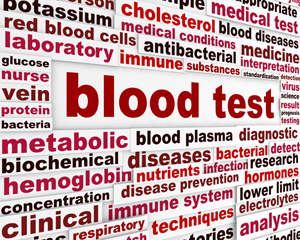Test Talk: Prolactin
diagnostic value and test requirements for phlebotomists
by Dennis Ernst • January 09, 2020

Prolactin, as well as estrogen and progesterone, stimulate breast milk development during pregnancy and in nursing women, maintaining the breast milk supply. As a hormone produced by the pituitary gland, it's often ordered by physicians to diagnose the production of breast milk in non-pregnant or breast-feeding women, male infertility, menstrual irregularities, and pituitary disorders.
Elevated prolactin levels are also seen in patients with hypothyroidism, under physiologic stress, with chest wall trauma, seizures, and lung cancer and use of marijuana. Drugs that can cause an elevated prolactin include estrogen, tricyclic antidepressants, opiates, amphetamines, hypertension drugs, and some drugs that are used to treat gastroesophageal reflux.
Physicians also order prolactin levels when their patients have a condition that affects dopamine production or is taking medications that affect dopamine production.
Some healthy patients have elevated prolactin levels due to the presence of macroprolactin in their blood (prolactin bound to protein). Physicians who receive lab results with elevated prolactins may request additional tests to see if the elevation is due to macroprolactin, which is inert and non-diagnostic.
Prolactins reach their peak in the blood stream in the morning, and should be drawn 3-4 hours after the patient wakes. As a serum-based test, it is usually collected into a tube without anticoagulants, or with a clot activator. Some facilities draw prolactins into heparin tubes. The hormone is stable for two days prior to centrifugation, and five days after centrifugation at room temperature (six days with refrigeration).
References
- LabTestsOnline. American Association for Clinical Chemistry. AACC. Accessed 1/8/20.
- CLSI. Procedures for the Handling and Processing of Blood Specimens for Common Laboratory Tests; Approved Guideline—Fourth Edition. H18-A4. Clinical and Laboratory Standards Institute. Document H18-A4 Wayne, Pennsylvania 2010.
- Wu A. Tietz Clinical Guide to Laboratory Tests---Fourth Edition. Elsevier. St. Louis, Missouri. 2006.
- World Health Organization. Use of Anticoagulants in Diagnostic Laboratory Investigations. WHO. Geneva, Switzerland. 2002.
Related Posts and Information
overall rating: my rating: log in to rate
